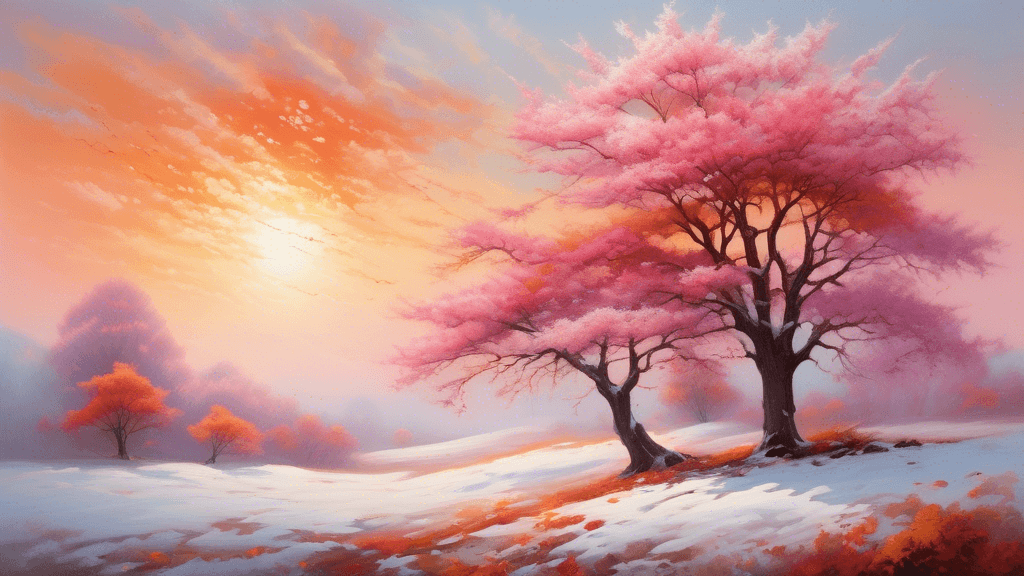
Lone Trees: Icons of Nature's Majesty
Share
The Symbolic Power of Lone Trees in Art and Culture
Have you ever noticed how a solitary tree standing in the middle of a vast landscape evokes a profound sense of awe and curiosity? Lone trees have been captivating artists, photographers, and nature enthusiasts for centuries. They are more than just plants growing independently; they symbolize strength, resilience, and beauty. But what is it about these solo sentinels that stir such deep emotions in us?
Artistic and Cultural Significance
Lone trees have appeared in artworks from the classic pastoral paintings of the Renaissance to modern digital photography. Artists like Caspar David Friedrich and Ansel Adams have immortalized the image of lone trees, using them as central figures in their compositions to evoke deeper meanings and emotions. These trees often represent solitude, persistence, and the struggle against the elements.
Photographic Appeal
In the realm of photography, the lone tree is a powerful subject. Its isolation makes it a stunning focal point against sweeping backgrounds that might otherwise overwhelm a busier scene. But capturing the majesty of a lone tree is not just about pointing and shooting; it involves understanding the interplay of light, shadow, and composition:
- Lighting: The time of the day significantly affects the mood of the photograph. The soft hues of golden hour emphasize the tree’s silhouette and can infuse the scene with a warm, serene atmosphere.
- Composition: Positioning the tree in a way that compleite harmony with its surroundings can enhance its stature and the story it tells.
- Background: A clear sky, distant mountains or even rolling fog can serve as a canvas that highlights the tree’s form and textures.
These techniques ensure the tree stands not only as a matter of interest but also as a testament to the photographer's skill and artistic vision. surroundings environment around them, toIt's not surprising that creating a compelling image of a lone tree can become a lifelong pursuit for many photographers.
The Ecological Importance of Lone Trees
Lone trees are not just aesthetically pleasing; they play critical roles in their ecosystems. They often serve as important landmarks and shelters for various species of wildlife. Specialists in the field of ecology stress the ecological benefits these trees offer:
“Lone trees act as mini-reserves for flora and fauna that might otherwise struggle to find habitat in open landscapes. They are crucial for biodiversity conservation,” explains Dr. Sarah Watkins, a conservation biologist.
This ecological role also gives another layer of importance to the conservation of lone trees, as many face threats from agricultural development, climate change, and disease.
Challenges in Conserving Lone Trees
Despite their importance, lone trees often face numerous threats that require active and thoughtful conservation strategies. Among these are:
- Land development: As urban and agricultural lands expand, lone trees are often removed for land-clearing purposes.
- Climate change: Changing weather patterns can stress these trees, making them more susceptible to disease and extreme weather events.
- Disease: With limited genetic diversity, lone trees do not have the resilience that larger forests might have against pests and diseases.
Parting Thoughts: Why Should We Care?
Lone trees are more than just subjects for beautiful photographs or elements in picturesque landscapes. They are vital components of our global ecosystem and cultural heritage. As we continue to face environmental challenges, the story of these trees and their lone battles for survival remains particularly relevant. It's a poignant reminder of our responsibility to protect these natural icons for future generations.
So, next drive past or walk near a lone tree, take a moment to consider its resilience and beauty. Think about how you can contribute to preserving such magnificent trees, whether through active conservation efforts or by raising awareness. Every effort counts in the fight to preserve our planet's precious biodiversity.
How will you help protect the next lone tree you see?





